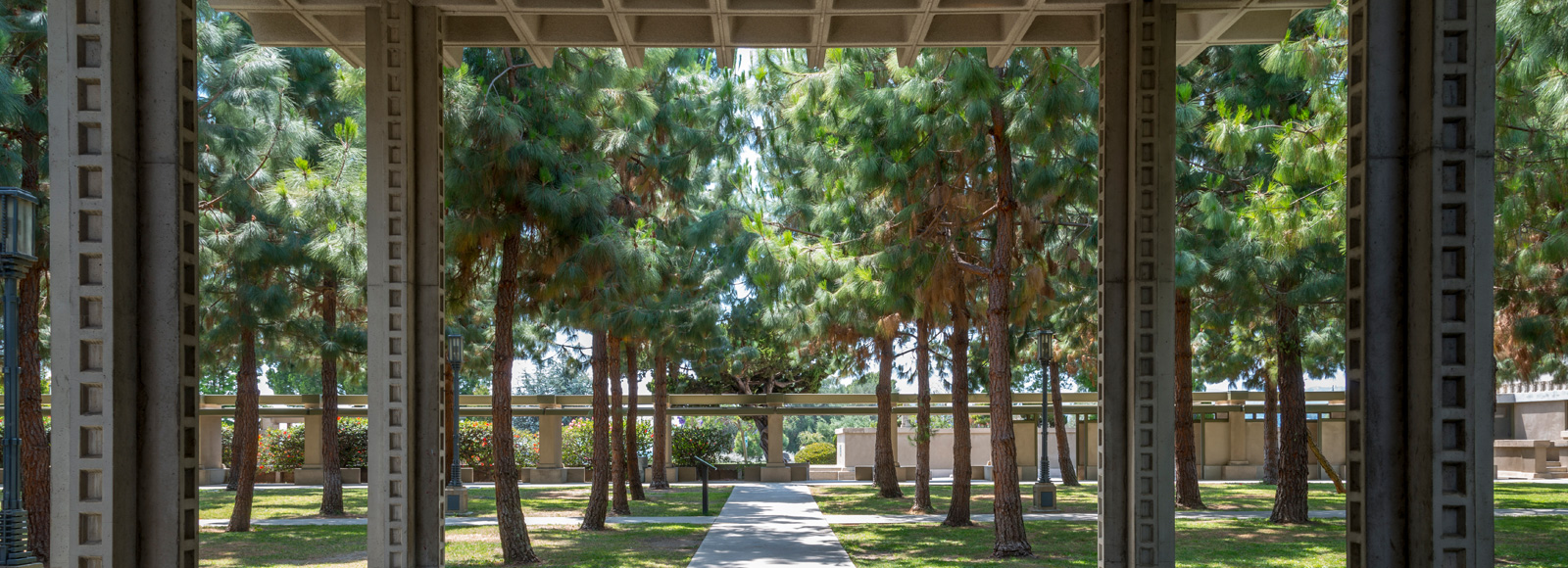Los Angeles Municipal Art Gallery
When the Los Angeles Municipal Art Gallery (LAMAG) was first established in 1954, it was one of only a handful of venues in Los Angeles where the public could experience high quality art exhibitions. The gallery was founded by Kenneth Ross, the legendary director of the Municipal Art Department, who defended the use of public funds for experimental art in the face of accusations of “heavy communist infiltration” by members of the City Council.
During this time, the gallery hosted old master exhibitions by Vincent Van Gogh, Rembrandt van Rijn and Henri de Toulouse-Lautrec, alongside modern art by Pablo Picasso, Jackson Pollock, John McLaughlin, Ed Kienholz; as well as craft and folk-themed shows. The gallery was housed in a temporary exhibition hall designed by Frank Lloyd Wright until 1969, when it was demolished to make way for the current building, a 10,000 sq ft space designed by Dennis Wehmueller and Arthur Stephens in 1971.
In 1975, the gallery’s new director Josine Ianco-Starrels initiated a more progressive approach for the gallery that continues to inform our ethos today. Under Ianco-Starrels, the Municipal Art Gallery was dedicated to presenting exhibitions by artists from Los Angeles – in particular artists of color and women artists – whose work may not otherwise have found a platform. Many local artists who have exhibited at the gallery have gone on to become fixtures of the international art world, including Eleanor Antin, John Baldessari, Mark Bradford, Vija Celmins, David Hammons, Barbara Kruger, Kerry James Marshall, Senga Nengudi, Catherine Opie and Ed Ruscha.
Past exhibitions
Please visit our past archives page for a complete list.
Barnsdall Park
The Los Angeles Municipal Art Gallery is located in Barnsdall Park, a historic cultural center also occupied by the Barnsdall Gallery Theater, the Barnsdall Art Center, the Junior Art Center and Hollyhock House, designed by celebrated architect Frank Lloyd Wright. Built between 1919 and 1921, Hollyhock House represents his earliest efforts to develop a regionally appropriate style of architecture for Southern California. Selecting a thirty-six acre site then known as Olive Hill, Wright and his commissioner Aline Barnsdall, to whom the park owes its name, worked together to develop a plan that included a home for Barnsdall and her young daughter, two secondary residences, a theater, a director’s house, a dormitory for actors, studios for artists, shops and a motion picture theater. Due to financial and artistic differences, only the main home and two secondary residences (of which only Residence A survives) were built. In 1927, Barnsdall gave Hollyhock House and eleven surrounding acres to the City of Los Angeles for use as a public art park in memory of her father, Theodore Barnsdall. The deed, which granted the property to the city, stipulated that Olive Hill should “forever remain a public park…for the enjoyment of the community in general [and that] no buildings be erected except for art purposes.”
For more information about Barnsdall Park please visit http://barnsdall.org/
Department of Cultural Affairs
The Los Angeles Municipal Art Gallery is managed by the City of Los Angeles Department of Cultural Affairs. Formed in 1925, the DCA’s mission is to strengthen the quality of life in Los Angeles by stimulating and supporting arts and cultural activities, ensuring public access to the arts for residents and visitors alike. The DCA advances the social and economic impact of arts and culture through grantmaking,public art, community arts, and strategic marketing and development. DCA creates and supports arts programming, maximizing relationships with other city agencies, artists, and arts and cultural nonprofit organizations to provide excellent service to all residents and visitors in neighborhoods throughout LA. For more information please visit http://culturela.org/about/


